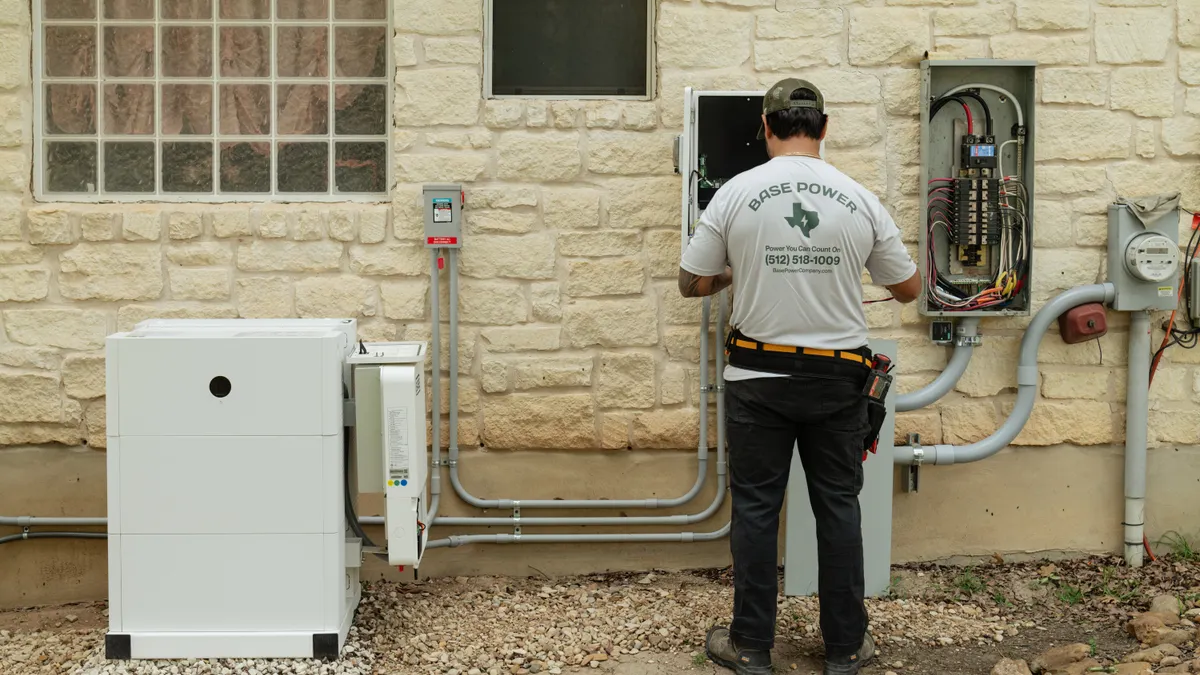The following is a contributed article by Todd Olinsky-Paul, senior project director for Clean Energy Group and Clean Energy States Alliance.
Clean energy advocates are celebrating a major energy storage milestone in New England: Plus Power, a San Francisco-based developer of grid-scale batteries, is building the two largest battery projects to date in the region — a 150-MW/300-MWh lithium-ion battery system at Carver, Mass., south of Boston, called Cranberry Point Energy Storage, and a 175-MW/350-MWh lithium-ion battery system in Gorham, Maine.
The size of these systems is impressive, but the real news in this announcement is the economic basis for the plants: Plus Power won two bids in the ISO New England forward capacity auction, meaning the developer is now on the hook to deliver on a seven-year capacity contract beginning in June 2024. The two huge battery projects are being built to fulfill those contracts.
The forward-capacity auction is the mechanism by which the independent system operator (ISO) — the organization that runs the regional electric grid — ensures there will be enough electricity to meet peak demand caused by extreme temperatures in summer and winter. Traditionally, fast-responding, small, fossil-fuel generators (mostly gas plants) have been paid — and paid well — to provide this service. But increasingly, newer, cleaner technologies, such as consumer demand response and battery storage, are displacing gas plants.
Batteries can respond even faster than gas generators and can more accurately track signals from the ISO; and in some parts of the country, batteries can provide peak power more cheaply than gas, since they can charge overnight, when electricity is cheapest, or from renewables such as solar and wind, which have no fuel cost.
New England, it appears, is becoming one of these regions. That Plus Power won a piece of the highly competitive regional capacity auction means that battery storage is now able to compete head-to-head economically — without subsidies — against incumbent fossil fuel generation in New England. A recent assessment of the economics of batteries versus a proposed gas peaker plant in Peabody, Mass., also found that batteries were a more cost-effective approach for meeting regional energy needs during peak demand periods. This is good news, because gas plants in the region need to be replaced with clean renewable generation and storage if states are to reach their clean energy and emissions goals.
For Massachusetts, reducing emissions is a very important benefit. When charged from renewables, batteries are emissions-free, whereas gas peakers are highly polluting. With gas plants being regulated out of existence in Massachusetts by the state’s Global Warming Solutions Act, batteries are poised to take over a significant chunk of the power supply market. This doesn’t just apply to big, grid-scale batteries like those being developed by Plus Power; the region is already being transformed by networks of aggregated, small, behind-the-meter batteries through programs like ConnectedSolutions in Massachusetts, Rhode Island and Connecticut; Green Mountain Power’s Powerwall and Bring Your Own Device programs in Vermont; and Liberty Utilities’ customer battery pilot program in New Hampshire.
The result of this market transformation should be cleaner air — especially in urban environmental justice communities where peakers are commonly sited — and a reduced contribution to global warming.
The new Plus Power batteries should also qualify for Massachusetts’ Clean Peak Standard (CPS), providing a nice extra economic incentive (although the CPS didn’t exist when Plus Power decided to enter the New England capacity market). The first such program in the nation, the Clean Peak Standard is intended to increase the contribution of clean and renewable generation to peak power. It should also help the state reach its energy storage procurement target of 1 GW by 2025.
In addition to supplying needed peak capacity, the Cranberry Point project is supposed to reduce transmission grid congestion in southeast Massachusetts that is anticipated to result from new solar and offshore wind projects.
All of this bodes well for New England — but to be clear, we’re only at the very beginning of this much-needed market transformation. To put this news into context, the 2021 New England forward capacity auction acquired 34,621 MW of capacity. Of that total, batteries comprised 630 MW — less than 2% of the market. The planned Cranberry Point Project, despite being the largest battery in Massachusetts to date, will replace only about 10% of the capacity of the soon-to-retire 1,700-MW Mystic River gas generation plant north of Boston.
Clearly, batteries have lots of room to grow in New England.





















